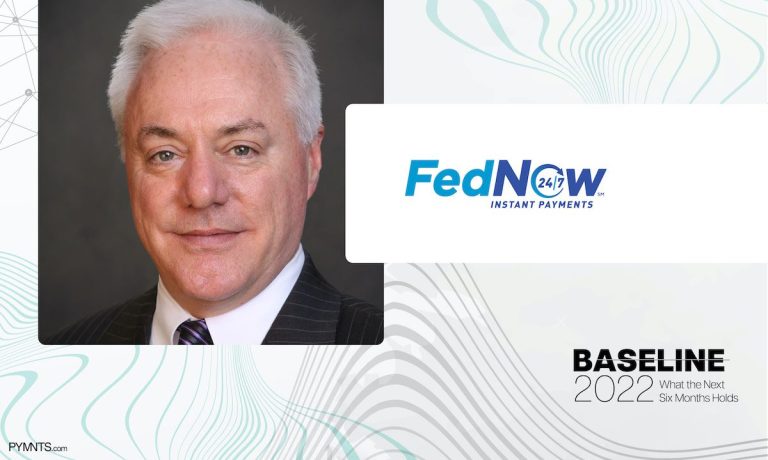
Kenneth Montgomery, first VP and chief operating officer, Federal Reserve Bank of Boston and FedNow service program executive, writes in the PYMNTS eBook “Baseline 2022: What the Next Six Months Holds” that economic uncertainty makes the need for reliable, safe and timely payments more important than ever.
Americans are increasingly anxious over socio-economic uncertainties, the war in Ukraine and the ongoing COVID-19 pandemic — all factors that drive a growing desire for greater control over their finances. In this environment, reliable, safe and timely payments are more important than ever.
These same global uncertainties are also sparking difficulties for financial institutions and payment providers who may face tough choices when considering investment in payments innovation while looking to tighten the budget belt. Nevertheless, even in the face of these headwinds we must remain committed to safe, modern payment capabilities that Americans need to feel confident in their finances.
Indeed, in this environment, an instant payments infrastructure that reaches all financial institutions, and thus all Americans, is even more compelling. The Federal Reserve expects to launch its FedNow Service for instant payments nationwide in 2023, joining other faster and instant payments networks in pursing this outcome.
We anticipate that the Fed’s nationwide connections and customer service relationships with more than 10,000 financial institutions across the country will encourage both wider availability of, and increased confidence in and use of instant payments, a type of faster payment that credits the payee’s deposit account with final irrevocable funds within seconds of payment initiation.
Research tells us that in the face of continued unpredictability, businesses as well as individuals are expressing the need for more control over their money. They want to move money faster and get immediate access to their funds, 24/7.
Recent Federal Reserve surveys of businesses and consumers underscore the strong and growing end-user appetite for faster and instant payments. Among other trends, 9 out of 10 businesses expect to be able to make and receive faster payments in the next three years.
Corporations are calling for business-to-business and consumer-to-business payments that facilitate quicker access to funds, the ability to post payments immediately and automatically, and immediate notification of payment and remittance details with the payment. In addition, they are looking to streamline billing processes and improve efficiencies with straight-through processing.
Consumer demand for faster payments spans age groups and has intensified, especially for person-to-business payments but also person-to-person and account-to-account payments. Faster payment options for recurring, last-minute and other types of bill payments give consumers greater control over the timing of their transactions with businesses. Demand no longer lies only with younger consumers, with research showing that a majority of older Americans now use mobile and digital payments options, at least occasionally.
Looking ahead, current economic conditions have the potential to influence business leaders’ priorities in the payments space, including investing in technology for instant payments. Yet organizations that plan to take advantage of the current trends — in the financial industry and beyond — will need to prioritize technology and operational investments, if they have not done so already, to meet increased business and consumer demand for instant payments in the future.
It’s critical that — even amid the financial pressures that hold the potential to constrain investment and innovation — the payments industry energetically moves forward with transformational innovations that meet the rapidly evolving needs of the country.
Any views expressed in this article by the author Ken Montgomery are his own and do not necessarily represent the views of the Federal Reserve System.